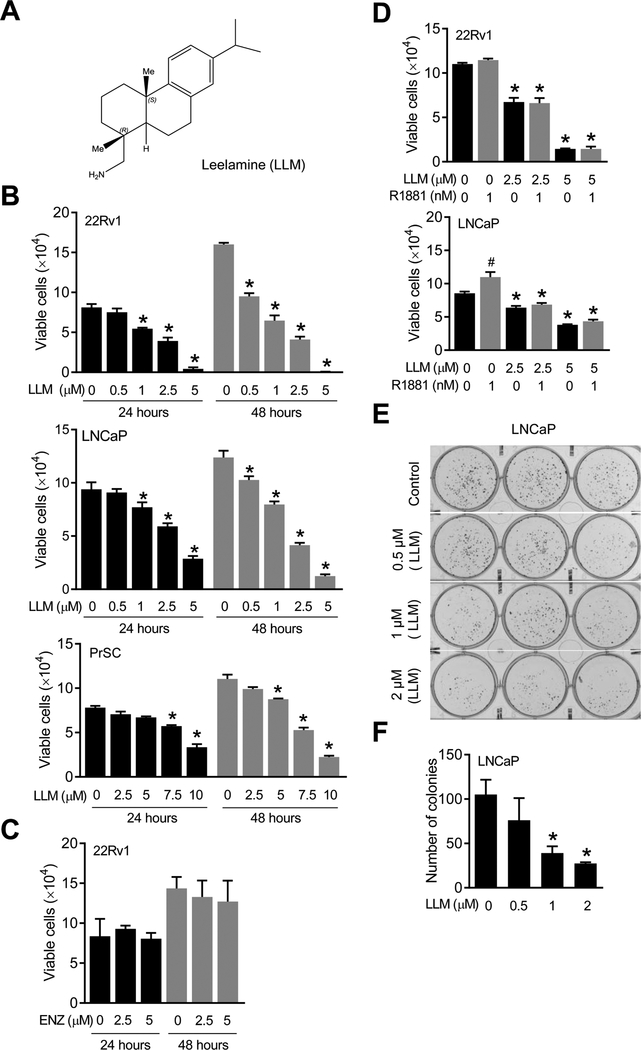Figure 1.
LLM treatment inhibited viability of prostate cancer cells. (A) Chemical structure of LLM. (B) Effect of LLM treatment on viability of 22Rv1, LNCaP, or PrSC cells as determined by trypan blue dye exclusion assay. (C) Effect of enzalutamide treatment on viability of 22Rv1 cells as determined by trypan blue dye exclusion assay. For data in panels B and C, combined results from two different experiments are shown as mean ± SD (n = 6). *Significantly different (p<0.05) compared with ethanol-treated control by one-way ANOVA followed by Dunnett’s test. (D) Effect of LLM treatment on viability of 22Rv1 and LNCaP cells with or without treatment with a synthetic androgen (R1881). Combined results from two different experiments are shown as mean ± SD (n = 6). Significantly different (p<0.05) *compared with ethanol-treated control and #between with or without R1881 treatment by one-way ANOVA followed by Bonferroni’s test. Clonogenic assay (E) and quantitation (F) in LNCaP cells after 10 days of treatment with LLM or ethanol (control). Results shown are mean ± SD (n= 3). *Significant (p<0.05) compared with control by one-way ANOVA followed by Dunnett’s test.

